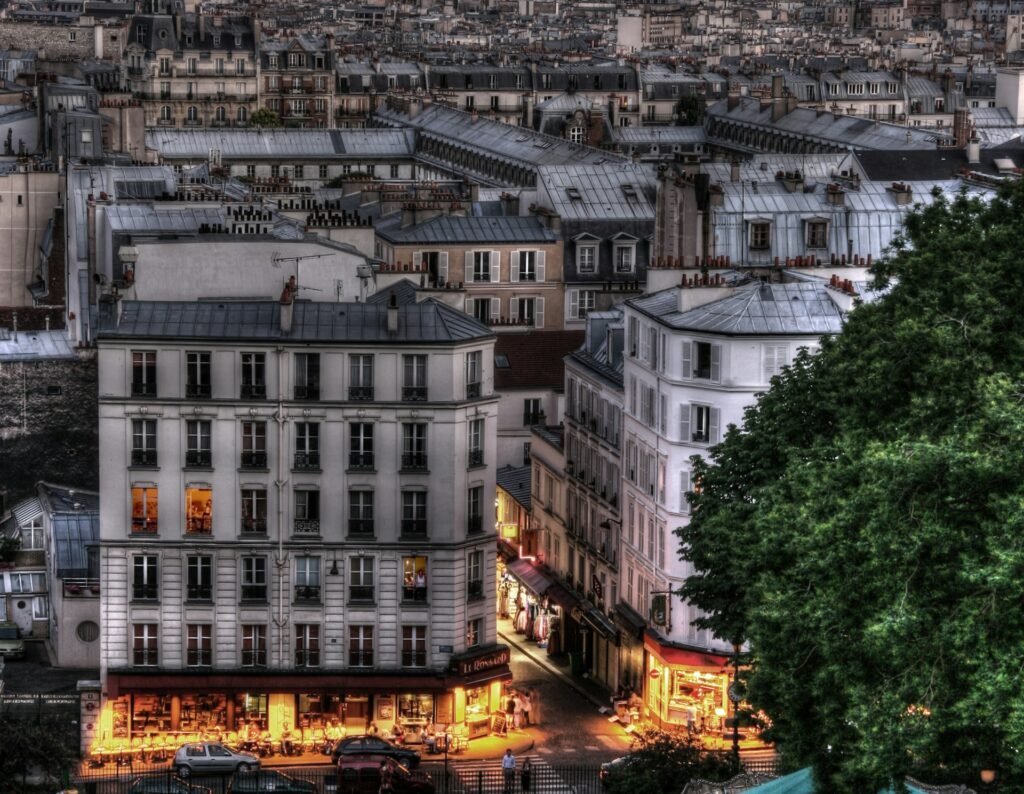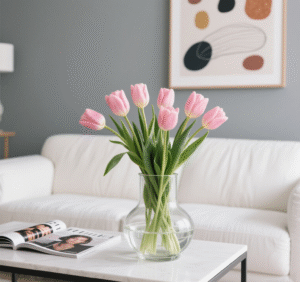This post may contain affiliate links which means we may receive a commission at no cost to you, if you make a purchase through a link. Please see our full disclosure for further information.
Paris is a city where every street breathes history and style. From the Seine’s gentle flow to quiet luxury neighborhoods, it mixes old charm with modern elegance. That’s what Paris: Geography, History & Luxury Highlights uncovers— the parts that make Paris a global icon of refinement. Whether you love culture, history, or upscale living, this guide shows why Paris feels like no other place.
The Geography: The Seine That Shapes Paris
The Seine River cuts through Paris, splitting it into two sides: Left Bank (Rive Gauche) and Right Bank (Rive Droite). This river is Paris’s backbone, not just a waterway.
For centuries, the Seine connected Paris’s neighborhoods. It carried trade ships in medieval times. Today, it lines with landmarks like the Eiffel Tower and Notre-Dame.
The Left Bank has bohemian roots. Think student cafes, bookstores, and art galleries in areas like Montmartre. The Right Bank leans into luxury— it has high-end shops and historic squares like Place Vendôme.
Paris also has green spaces to balance its buzz. The Tuileries Garden and Luxembourg Gardens let you walk, picnic, or relax away from busy streets.
The History: Centuries of Style and Story
Paris’s history spans over 2,000 years. Each era left a clear mark on the city.
Roman Lutetia (1st Century AD)
The Romans founded Paris as a small trading post called Lutetia. They built roads, baths, and walls. Some of these ruins still stand in the Latin Quarter today.
Medieval Paris (10th–15th Centuries)
This era brought the Notre-Dame Cathedral, started in 1163. The city grew around the Île de la Cité— a small Seine island that’s still Paris’s historic heart.
Renaissance & Royal Paris (16th–18th Centuries)
Kings like Louis XIV expanded Paris. They built the Louvre (once a palace, now the world’s biggest art museum) and grand avenues. Paris became a center for art, fashion, and ideas.
Modern Paris (19th–21st Centuries)
The 1889 World’s Fair gave Paris the Eiffel Tower. At first, critics hated it— now it’s Paris’s most famous symbol. The 20th century brought Impressionism and the Centre Pompidou. Today, Paris keeps its history alive while embracing new trends.
Luxury Neighborhoods: Where Paris Lives Elegantly
Paris’s luxury neighborhoods have unique personalities. They mix history, style, and exclusivity.
1. Champs-Élysées & Arc de Triomphe Area
The Champs-Élysées is Paris’s most famous avenue. It has luxury shops (Louis Vuitton, Cartier), cafes, and theaters.
Nearby, the Arc de Triomphe stands tall. It offers views of 12 radiating avenues. Homes here are rare and pricey— many are historic apartments with high ceilings.
2. Faubourg Saint-Honoré
This quiet street runs from the Louvre to the Champs-Élysées. It hosts embassies, Dior’s headquarters, and exclusive art galleries.
Residences here are discreet. Think 18th-century townhouses with hidden gardens. Diplomats and celebrities love it for privacy.
3. Saint-Germain-des-Prés
Saint-Germain blends luxury and bohemian charm. It once drew writers like Hemingway. Today, it has cafes like Café de Flore and high-end boutiques.
Apartments here sit in historic buildings. They have wooden floors and large windows. It’s perfect for those who want luxury with an artistic vibe.
4. Neuilly-sur-Seine
Just outside central Paris, Neuilly is a suburban luxury spot. It has large homes, quiet streets, and the Parc de Bagatelle.
Neuilly is family-friendly. It has top schools and easy metro access to central Paris. Many elites raise kids here.
Luxury Clubs: Exclusive Spaces for Paris’s Elite
Paris’s private clubs are hubs of privacy, culture, and networking. Most need membership (often by invitation only).
1. Le Cercle de l’Union Interalliée
Founded in 1917, this is one of Paris’s most prestigious clubs. It sits in a historic mansion near the Champs-Élysées.
Inside, there are grand dining rooms, a library, and gardens. Members include politicians, business leaders, and artists. It’s known for elegant events and strict privacy.
2. Le Club de l’Etoile
Le Club de l’Etoile is near the Arc de Triomphe. It’s popular with business elites for modern facilities and city views.
It has a restaurant, bar, and meeting rooms. It has a more relaxed vibe than older clubs— but membership is still hard to get.
3. Café de la Paix (Private Salon)
Café de la Paix is public, but its private salon is a hidden gem. It’s in the Opéra Garnier building, with opulent decor.
The salon hosts exclusive dinners, parties, and art events. It lets you experience Paris’s grandeur without a formal club membership.
Why Paris’s Luxury Feels Timeless
Paris: Geography, History & Luxury Highlights is about more than places— it’s about feeling. The Seine gives Paris rhythm. Its history gives it depth. Its neighborhoods and clubs give it soul.
Paris’s luxury isn’t flashy. It’s in small details: a historic apartment’s ceilings, a club’s quiet elegance, a Seine walk at sunset.
Whether you explore the Louvre, shop the Champs-Élysées, or sip coffee in Saint-Germain, you join Paris’s story. That’s what makes it unforgettable.
Uncover further inspiration in our blog.
Calendar of festive events and festivals in Paris
What to do in Paris this weekend: must-see activities!
Events in Paris – Events On When I Visit Paris














